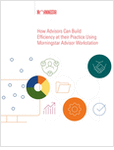Social Security and Medicare trust funds will remain solvent a year longer than previously estimated, fund trustees reported last week, prompting an intense effort by members of Congress from both sides of the aisle to use the data to their political advantage.
At the same time, the consensus of all the politicians–regardless of their perspective–is that the Part D prescription drug program as administered by the health insurance industry is working better than expected.
While he clearly represents the liberal perspective, Rep. Pete Stark, D-Calif., chairman of the Health Subcommittee of the House Ways and Means Committee, summed up the plethora of analyses as to the solvency of the fund by stating, “I would like to start by paraphrasing Mark Twain and saying that reports of Medicare’s death have been greatly exaggerated.”
In comments at an emergency hearing he convened on the report, Stark said, “Despite the gloom-and-doom forecasts and rhetoric from some of my colleagues, this year’s trustees report shows that Medicare remains solvent and sustainable.”
Solvency projections over the years have been as few as 4 years and as many as 28 years, he said. “This year, as in most years past, solvency remains strong by historical standards. There is plenty of time to make the necessary adjustments needed to prolong the life of the trust fund.
“That said, while the program faces undeniable demographic challenges in future years, the so-called 45% “funding warning,” which has been triggered in this year’s report, is little more than an arbitrary, hidden hatchet designed to eliminate Medicare’s entitlement and continue the march toward privatization started in the 2003 Medicare law,” Stark said.
Specifically, the report said the Social Security trust fund will remain solvent until 2041, and the Medicare fund until 2019.
The fund trustees said in their annual report that slight reductions in projected benefits and slightly higher tax collections had extended the dates that the trust funds are projected to be depleted.
The sole witness at the Health Subcommittee hearing was Richard Foster, chief actuary at the Centers for Medicare and Medicare Services, based in Baltimore.
Regarding the prescription drug benefit under Medicare, Foster said savings through the program were “bigger than we thought, initially,” because benefit plans health insurers set up to administer the program were able to negotiate better prices than CMS felt they would be able to.
Foster said CMS thought the plans would initially be able to get a 15% discount, eventually raising it to 25%, but in fact the plans got a 27% discount in the first year.








 April 29, 2007 at 04:00 PM
April 29, 2007 at 04:00 PM










